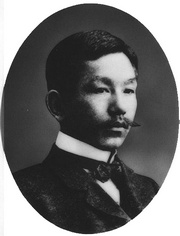This article is part of the series "A Moment in History" where we honor those who have contributed to the growth of medical knowledge in the areas of anatomy, medicine, surgery, and medical research.
Sunao Tawara, M.D. (1873 - 1952) Sunao Tawara was born in the prefecture of Ooita, Kyushu, Japan. Adopted by an uncle (and physician), Tawara studied English and German, and went on to the University of Tokyo medical school, where he graduated an MD in 1901.
In 1903 he traveled to Marburg, Germany, where he started working with Dr. Karl Albert Ludwig Aschoff (1866-1942), a noted pathologist. Tawara’s work led him to the discovery of what today we call the “atrioventricular node” (AV node) and the connections of the AV node and the Bundle of His (the right and left bundle branch). His work with Aschoff led to the eponym of “node of Aschoff-Tawara” for the AV node. Tawara’s work also led to the understanding of the function of the Purkinje fibers. Tawara gave the entire system the name “Reitzleitungssytem” or the “conduction system” of the heart.
In 1906 Dr. Tawara published his discoveries in a German-language article entitled “The Conduction System of the Mammalian Heart — An Anatomicopathological Study on the Atrioventricular Bundle and the Purkinje Fibers”. The same year he returned to Japan and in 1908 became Professor of Pathology at the University of Kyushu until his retirement in 1933.
Sources:
1. "Sunao Tawara" Suma, K. Clin Cardiol (1991) 14; 442-443
2. "Sunao Tawara, A Cardiac Pathophysiologist" Loukas, M. et al Clinical Anatomy 21:2–4 (2008)
3. "Sunao Tawara: A Father of Modern Cardiology" Suma, K. J Pacing Clin Electrophysiol (2001) 24:1; 88- 96




